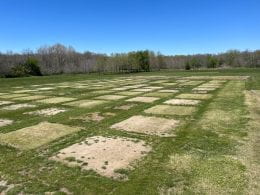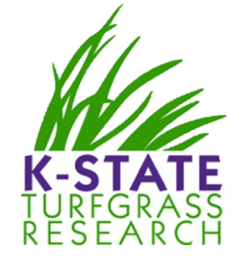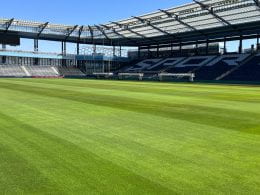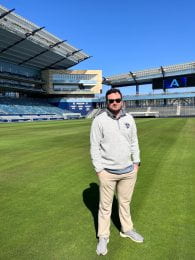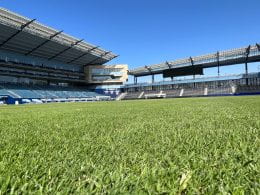
Winter injury in certain areas where warm-season grasses grow in the transition zone is not unusual. Specifically, here are the things that can have a significant impact on winter injury of zoysiagrass and bermudagrass:
- Selection of a less cold hardy warm-season grass: There is a relatively short list of bermudgrass and zoysiagrass cultivars that are best adopted to the transition zone, including Kansas. Here are a few of each of those species that are relatively good through winter, but that doesn’t mean they can’t suffer winter injury:
Zoysiagrass – Meyer, Innovation, Zenith (seeded), Chisholm
Bermudagrass – Tahoma 31, Latitude 36, Northbridge, Yukon (seeded), Monaco (seeded)
- High Nitrogen levels: High levels of nitrogen fertilizer through the growing season, or nitrogen applied in the fall can have a more significant impact on winter injury.
- Shade: Shade reduces photosynthesis and carbohydrate production by grasses, and can significantly reduce the potential for a species/cultivar to survive cold temperatures. Trimming trees or removing them may be required to enhance cold hardiness.
- Traffic: Significant traffic on the soil and turf prior to winter can have a significant impact on the turf and result in higher levels of winter injury. Traffic control (not allowing excessive traffic) and effective aerification can help enhance its survival.
- Excessively wet soil: It’s not unusual for warm-season turf that sits in a low area (often on golf course fairways) where water accumulates can have a greater impact of winter injury. High levels of water in the soil will impact these grasses when severe cold arrives. Improved drainage can help protect these areas.
- Lack of snow cover: Snow is very beneficial to protect warm-season grasses prior to excessively low temperatures. For example, several years ago we had snow cover in Olathe, KS when temperatures were at least -15 F and no winter injury occurred.
- Grass not fully acclimated for cold temperatures: There is a greater chance of freezing injury if temperatures get quite low when the grass had not fully acclimated to cold. Example – excessively low temperatures in November or December can have a significant impact. Likewise, the same may occur during late winter or early spring when warmth approaches and then that is followed by excessive cold.
- Exposure to wind on high level areas: This can often cause desiccation in winter if exposed to strong wind when there is no snow cover. If expected in the near future, it may be useful to apply water on these elevated areas before the excessive cold arrives. Or…some type of cover to protect the surface.
